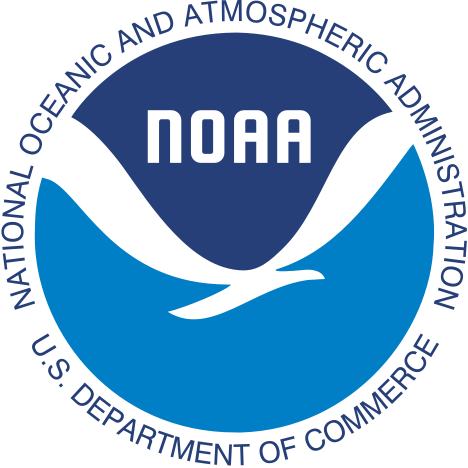The Working Groups serve a fundamental role in the UFS community. They are a diverse group of subject matter experts who provide input and insight on an ongoing basis. The Working Groups also develop and maintain the UFS Strategic Implementation Plan (SIP), which is updated on an annual basis. The Working Groups collaborate closely with the UFS Steering Committee (a part of the UFS Governance) and the NOAA Program Offices, which fund and support the UFS. The Working Groups are dynamic in that they evolve, and their membership evolves, as needs of the UFS change.
Have questions or want to get involved?
Send us an email at ufs.community@noaa.gov
Application Teams
Sub-seasonal to Seasonal (S2S)
The primary goal of the S2S team is to improve the accuracy, reliability, and usefulness of earth system model predictions on timescales ranging from a few weeks to several months. The team focuses on advancing model development to better capture atmospheric, oceanic, ice and land-surface processes. A key objective is the diagnosis of S2S phenomena, such as the Madden-Julian Oscillation, sudden stratospheric warmings, blocking events and ENSO, and improving understanding of the physical processes that drive predictability at these timescales.
Hurricane
The Hurricane Application Team is one of the Unified Forecast System (UFS) based application development teams, led by the Environmental Modeling Center (EMC) and the Hurricane Research Division (HRD). The team is dedicated to the development, enhancement, and maintenance of the operational hurricane forecasting system known as the Hurricane Analysis and Forecast System (HAFS). HAFS is NOAA’s next-generation modeling system, designed to significantly improve Tropical Cyclone (TC) forecast guidance across all global ocean basins. As a result of years of collaboration among NOAA Line Offices and the broader research and operational communities, two configurations of HAFS version 1—HFSA and HFSB—were successfully implemented into operations at the National Weather Service (NWS) National Centers for Environmental Prediction (NCEP) on June 27, 2023.
Coastal
The UFS Coastal Applications Team (CAT) – Water Quantity consists of teams across NOAA’s research and development laboratories and operational centers, academic partners, and industry. UFS CAT has set up three sub-applications–marine navigation, total water level, and risk reduction–to evaluate and select NOAA’s next-generation coastal oceanographic model(s) to be part of the UFS that supports each sub-application. The work of the UFS CAT has greatly enhanced NOAA’s central goals of “Accelerating Growth in an Information-Based Blue Economy.”
Space Weather
The Space Weather Working Group is developing a Whole Atmosphere capability based on the Unified Forecast System (UFS) to capture the dynamics of the thermosphere and ionosphere, supporting the growing needs of the space weather environment for the space and GNSS industries
Medium Range Weather
The goal of the Medium Range Weather Application Team is to enhance the skill and accuracy of the earth system model forecasts spanning from about a few days up to two weeks lead time. The team focuses on improving model physics, dynamics, and data assimilation to better represent key processes in the earth system model, with a focus on the atmospheric processes.
Short Range Weather
The Short-Range Weather (SRW) Team focuses on developing numerical models and data assimilation systems designed to predict atmospheric behavior on relatively short time scales (minutes to several days) and over regional (as opposed to global) spatial domains. A primary goal of the SRW Team is to develop a new unified deterministic and ensemble storm-scale prediction system, known as the Rapid Refresh Forecast System (RRFS), which is capable of replacing multiple legacy high-resolution regional prediction systems. In addition, a RRFS-based ensemble, known as the RRFS Ensemble Forecast System (REFS), is expected to replace the current ad hoc ensemble derived from these legacy deterministic systems. The expected outcome of this work – a broad collaborative effort involving EMC, GSL, NSSL, AOML, GFDL, the DTC and multiple academic partners – is a UFS-based high-resolution, frequently updating, large-domain prediction system for research and NCEP operations.
Air Quality
The UFS Air Quality (AQ) Team has a mandate to develop and utilize numerical prediction models to generate AQ forecast guidance. This mandate is derived from a 2002 DOC/NOAA directive to establish a National Air Quality Forecast Capability (NAQFC), and a 2003 Memorandum of Agreement between NOAA and the EPA to generate AQ forecast guidance for use by state and local AQ forecasters. The AQ Team has embraced the UFS framework and provided the first UFS modeling system implemented in NCEP operations (in May 2024). Primary NOAA partners on the development team include EMC, ARL, GSL, and NESDIS, while the EPA and multiple university partners provide equally important contributions to this multi-faceted effort. Currently, NCEP’s operational AQ Model (AQM) provides AQ guidance over a North American domain twice daily.
Cross-Cutting Teams
Systems Architecture and Infrastructure
The UFS system architecture serves as the backbone of a unified modeling system, and must provide high performance, reliable technical and scientific functions for a range of different forecast products. The UFS System Architecture and Infrastructure Cross Cutting Team (SAICCT) is a working group with representatives from NOAA and the broader UFS community, and provides guidance on the development of key structural components for the UFS.
Communication, Education & Outreach (CEO)
The purpose of the Communications, Education, and Outreach Committee is is to build, support, and maintain a vibrant UFS community. The CEO Team serves as the primary interface between all UFS community users, collaborators, and the public. The CEO team is intended to (1) facilitate engagement across the entire UFS community (including across UFS Implementation Team subgroups), (2) improve academic participation and improve teaching tools for the UFS, and (3) share technical and non-technical information related to the Unified Forecast System with the public.Unified Forecast System Community.
Verification & Validation
An evidence-based evaluation of all components of the UFS is needed to make effective decisions guiding the development of the UFS and to ensure that the new systems are better than those being replaced.
Release Team
The mission and objective of the UFS RC CCT is to provide a high-level strategic vision for UFS public releases, guide and provide recommendations to the technical release team regarding planned UFS code releases, and coordinate the UFS community in contributing to the release.
Component Teams
Aerosols & Atmospheric Composition
The Aerosols and Atmospheric Composition Working Group is focused on the inclusion of aerosols, greenhouse and reactive gases in the UFS.
Physics
The ultimate goal of the Physics Working Group is the development of atmospheric physical parameterizations that can be applied to UFS applications across scales.
Land
Language to be provided
Data Assimilation & Ensembles
Language to be provided
Dynamics & Nesting
Language to be provided
Marine
Language to be provided




